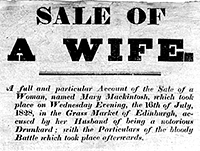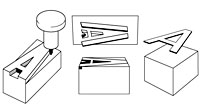| Broadsides | |||
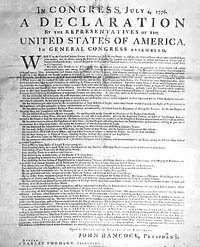 |
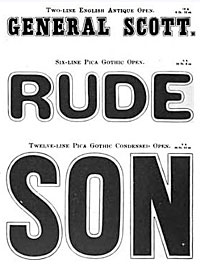 |
 |
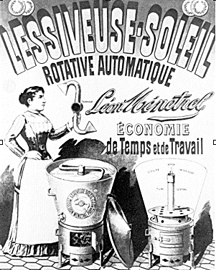 |
Printed Broadsides Printed on one side only, broadsides are used to issue public decrees, governmental notifications and a host of commercial and private announcements. Early broadsides were quickly and crudely produced in large quantities and distributed freely in town squares, taverns, and churches. Some were sold by itinerate salesman, or chapmen, for a nominal charge.
Broadsides were intended to have an immediate impact and then to be discarded. Items printed for short term consumption are referred to as printed ephemera. Posters grew more sophisticated as printing technologies and artistic movements evolved. Illustrators and graphic designers were afforded a medium for public artistic expression while promoting the products of their client. Many type faces, specifically drawn to compliment illustrations, inspired new metal type. Immensely popular and affordable, posters were made available to the general public who purchased them to display in their homes. While in the 18th and 19th centuries most urban areas had public spaces allotted for posters, today there is increasingly less space available for posting broadsides. 1 |
A Need for Large Type Broadsides were meant to be read from a distance and therefore required large type. Metal type could not be cast much larger than an inch and still retain the flat surface required for letterpress relief printing. Twelve line pica (explained here) was the largest size feasible in metal type but in actual practice wood type was used for larger sizes. The image above is a sample from the Bruce's New York Foundry specimen book of 1869 available for on-line viewing at this link. I highly recommended looking at this or other specimen books of that era to appreciate the variety of type available to designers. There were a number of negative factors of large metal type, it was expensive, required a large amount of storage space, and was extremely heavy—just try lifting a case of this type! If a printer did have a collection of large metal type, it was likely that they didn't have enough letters in the same face to set many words so type styles were mixed and matched depending on what was in the shop collection. As illustrated (on the Lincoln poster, above right and images below) wooden type was often mixed with metal type in a conglomeration of styles. |
Wooden Type Commercial pressure for large type was answered with the invention of a system for wood type production. In 1827 Darius Wells (1800-1875) invented a special wood drill, the lateral router, capable of cutting letters on type-high end-cut wood blocks. The router was used in combination with William Leavenworth's pantograph (1834) to create decorative wooden letters of all sizes and shapes. In 1880 James Hamilton developed a method of adhering a veneer made of holly wood onto a pine base. Within a decade he converted to the standard end-cut method. (Thanks to David Shields Visit the Rob Roy Kelly American Wood Type Collection here. Rob Roy Kelly (1925–2004) was a designer and educator who researched and collected 19th century American wood type. His oeuvre is held at the University of Texas at Austin where a wonderful on-line resource is waiting for you to peruse. |
Lithographic Posters The process of lithography depends on the mutual repulsion of grease and water. It was invented by Alois Senefelder in 1796 as he searched for an alternative process to expensive metal plate engraving. His method involved drawing with a greasy crayon onto finely surfaced Bavarian limestone and offsetting that image onto paper. In later commercial applications metal plates were used. This direct process captures the artist's true intention, however the final printed image is in reverse. The images and lettering needed to be drawn backwards, often reflected in a mirror or traced backwards on a transfer paper. A distinct advantage of lithography was the ability to hand draw letters, opening the field of type design to endless styles. Two great visuals on how lithography works: |
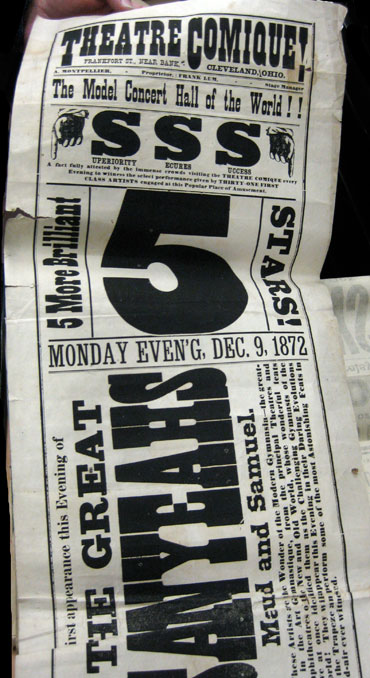 |
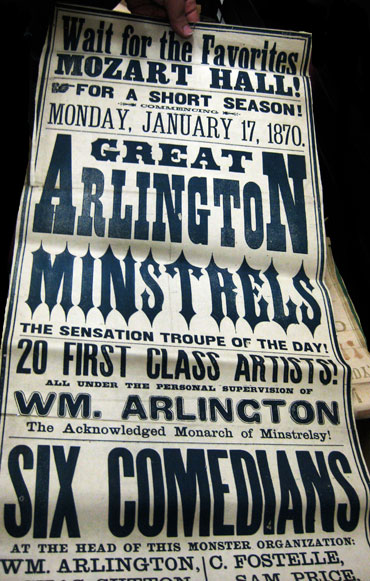 2 |
||
| Footnotes | |||
| 1 Shown above is the Declaration of Independence broadside by John Dunlap, a government printer and publisher in Philadelphia in 1776. |
2 Posters, Courtesy of Theater Collection of The Free Library of Philadelphia. ©2012 designhistory.org |
||
| Copyrights | |||
| ©Designhistory.org 2011 | For Permission Info click here | ||

